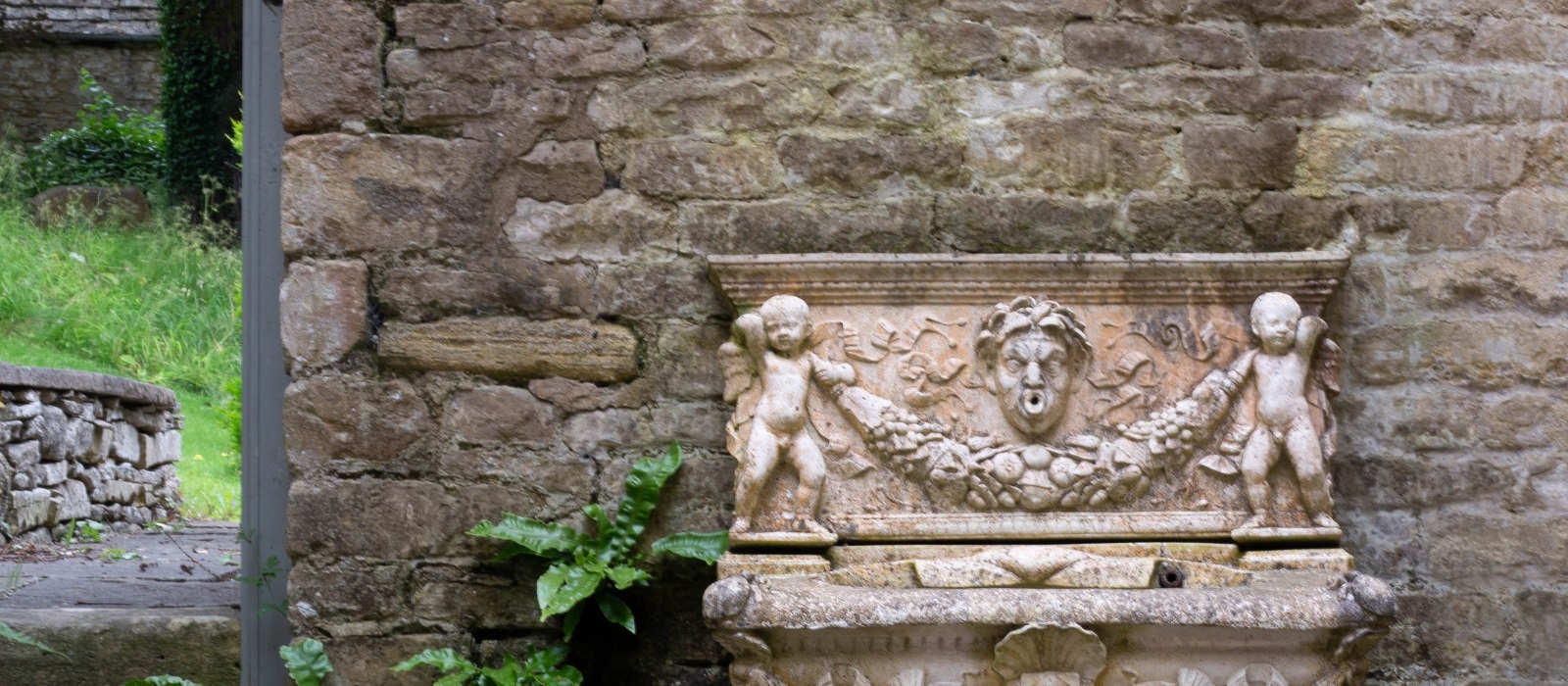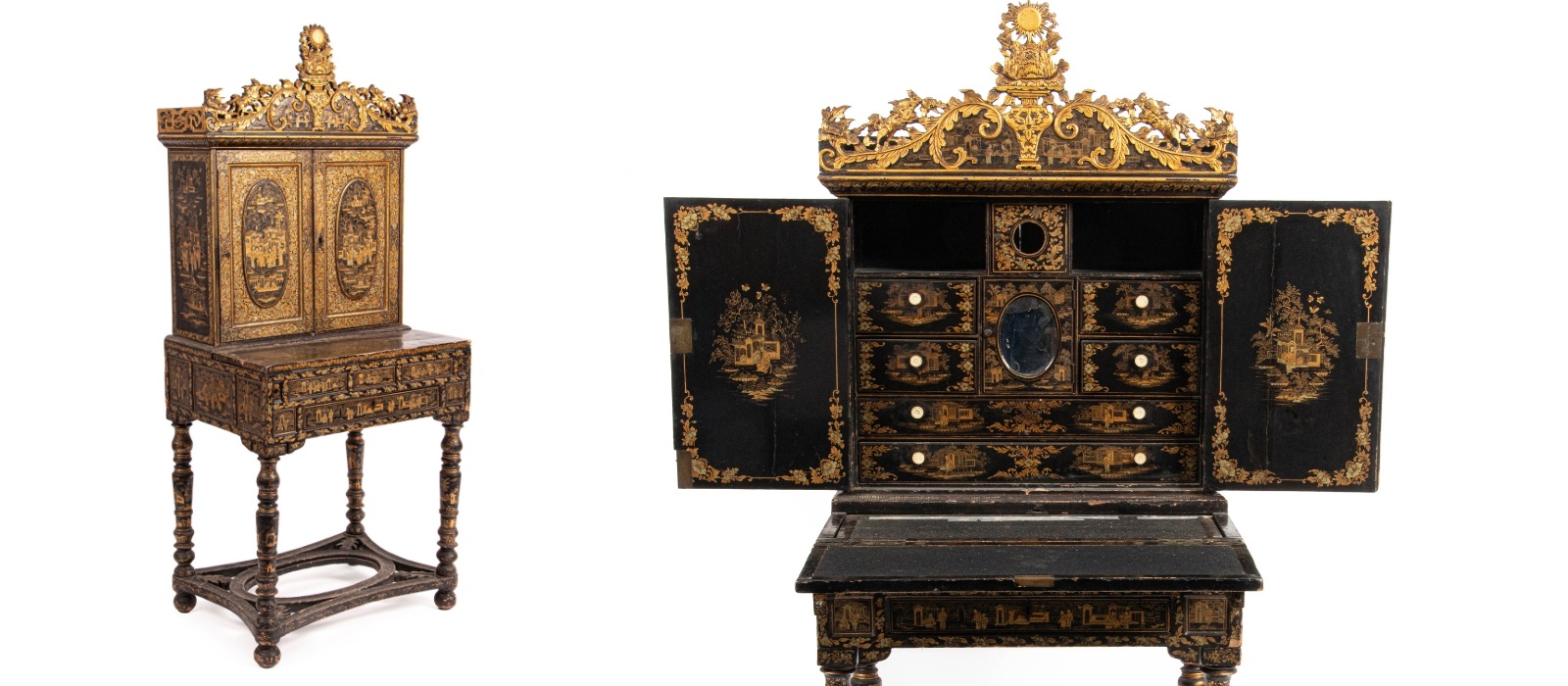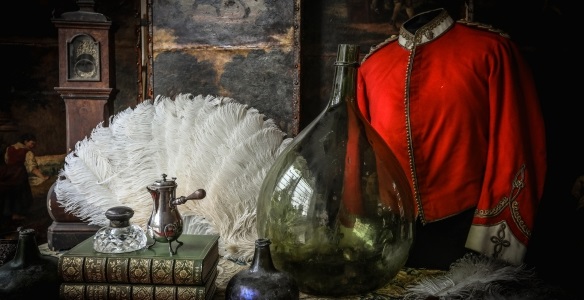

“The interiors at Dunkirk Manor were the culmination of a lifetime of collecting which seamlessly blended styles, cultures and textures across several centuries and reflected a unique personal style. The overall effect was atmospheric and theatrical, full of colour and eye-catching details, a breath of fresh air in a world full of dull and homogeneous interiors. It is now time for this collection, that has given so much joy, to be dispersed and go on to enhance other collections and interiors.”
Chorley’s have been appointed to sell the principal contents of historic Dunkirk Manor in Gloucestershire in their upcoming two-day sale of Fine Art & Antiques on July 23 & 24, 2024. The Cotswold manor house, which still features some of its original 17th century features, has encountered various restoration and extension schemes through the 18th and 19th centuries, most notably by a local Gloucestershire clothier John Cooper in the early 19th Century. John Cooper was well-known and respected in the area. In 1798 he bought a spinning mill near Dunkirk Manor called New Mills, which he modernised and his work was soon in high demand, spurred on by a high demand for uniform cloth during the Napoleonic wars. His mill grew to become one of the leading clothing manufacturers in the Gloucestershire region and Cooper decided to rename it Dunkirk Mills in homage to his new home. John’s renovation didn’t stop there and as well as expanding Dunkirk Manor, he added an ornate Georgian façade. In the 21st Century Dunkirk Manor became a family home and the ‘stage’ for an eclectic and decorative collection, amassed by a well-travelled female private collector.

Commenting on her mother’s carefully curated collection, one of her daughters tells us:
“Our mother’s extraordinary collection seamlessly blends the modern with the antique, which is a reflection of her impeccable taste and deep appreciation for historic and contemporary design. Originating from Belgium, her aesthetic sensibilities were shaped by her experiences living in Belgium, Austria, France and the UK and trips across Europe and Northern Africa (Egypt). Each place added layers to her unique design style, from the elegant simplicity of Austrian design, and the romantic allure of France to the classic charm of English decor.
As her collection grew, it moved with her across Europe, each piece a testament to her journey and evolving taste. Her passion for antiques blossomed into a career as an antique dealer, while her collection remained a deeply personal and ever-expanding endeavour. She had an eye for French furniture, Asian-inspired pieces, ceramics and eclectic modern art, creating spaces that were both sophisticated and inviting. Throughout her life, our mother’s collection was a dynamic and living testament to her extraordinary flair for interiors, her rich cultural experiences, and her enduring love for beauty in all its forms.”
The collection will present the opportunity to acquire a diverse range of fine and decorative arts, from antiquity to contemporary. Thomas Jenner-Fust, Director at Chorley’s says: “The interiors at Dunkirk Manor were the culmination of a lifetime of collecting which seamlessly blended styles, cultures and textures across several centuries and reflected a unique personal style. The overall effect was atmospheric and theatrical, full of colour and eye-catching details, a breath of fresh air in a world full of dull and homogeneous interiors. It is now time for this collection, that has given so much joy, to be dispersed and go on to enhance other collections and interiors.”
Among the highlights is a Roman marble cinerary urn and lid dating from circa AD 69-96. These ancient Roman cinerary urns were ornate carved vessels used to hold the ashes and bones of a deceased person. They were usually stored in underground chambers with niches in the walls specially created to hold each urn. The elaborate version is carved with eagles at the corners and a ram’s mask on each side, supporting a swag of olive leaves. It carries an estimate of £8,000-£12,000.
A 19th Century Italian Siena marble model of the sarcophagus of Lucius Cornelius Scipio Barbatus, from the tomb of the Scipios, is another fascinating addition to the sale. It is based on the original rediscovered sarcophagus of Lucius Cornelius Scipio Barbatus (c. 337 BC-270 BC), who was an elected Roman consul in 298 BC. Lucius, who was a member of the noble Roman family of Scipiones, led the Roman army to victory against the Etruscans near Volterra and his sarcophagus demonstrates his importance. The original was the only intact survival within the Tomb of the Scipios on the Via Appia. It became a key feature and symbol of the Grand Tour and is now held in the Museo Pio Clementino in the Vatican. The model of it being offered in the sale is highly decorative with carved scrolls, floral motifs and acanthus leaves, with inscriptions to the main body. It carries an estimate of £2,000-£4,000.
Among the fine art in the sale is a 19th century oil painting of Madonna and Child, after the revered Italian Renaissance artist Raphael (1483-1520). The painting emulates the colours used by Raphael, as well as a similar pose by the subjects. The fabric and drapery suggest its 19th century date, but its power and drama are undeniable. It carries an estimate of £1,000-£2,000.
A landscape work titled Cattle and Sheep in a Landscape is by a follower of Thomas Sidney Cooper R.A. (1803-1902). Thomas Cooper was an English landscape painter from Canterbury, celebrated for his images of farm animals and cattle. This idyllic scene of cows and sheep in a rustic country setting, dates from the 19th century and carries an estimate of £1,000-£1,500.
 A black lacquered chest on stand with chinoiserie decoration in gilt.
A black lacquered chest on stand with chinoiserie decoration in gilt.
Estimate £800-1,200
Among the furniture is a black lacquered chest on stand with chinoiserie decoration in gilt, dating from the 19th century. Its interior features beautifully illustrated allegorical scenes and it continues on its stunning exterior. Lacquer was a prevalent form of decoration which began in ancient China. It was used to decorate furniture, screens, sculpture and even coffins, where it could be carved and inlaid to portray scenes from literature, nature and mythology. The chest carries an estimate of £800-£1,200.
Among the more unusual works is a 19th century Dutch child's sleigh, which features painted and parcel gilt decoration, with stunning landscape scenes on each side. It carries an estimate of £300-£500.
A 19th century Dutch child's sleigh
Estimate £300-£500

BBC NEWS: Historic Manor contents for auction


